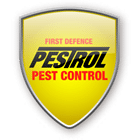What are pesticides?
Pesticides have been used for centuries. In fact, the first recorded use of pesticides was in around 2500BC where sulphur was used as an insecticide in ancient Mesopotamia. By the 15th century arsenic, mercury and lead were the main chemical elements in use. The manufacture of synthetic pesticides became widespread in the 1940s with the insecticide DDT becoming the best known. It was first used by the Allies in World War II to control typhus and malaria and became available to the public in 1945. Latterly, in the 1970s, the world’s most widely used herbicide, glyphosate, came on the market. Manufactured by Monsanto, it is the active ingredient in many weed killers, including Roundup, is widely used by farmers and groundskeepers globally and is also available to buy by the general public in most garden centres and supermarkets.
The term pesticide covers a wide range of compounds including insecticides, fungicides, herbicides, rodenticides, molluscicides, nematicides, plant growth regulators and others.
Ideally, pesticides have been created to be toxic to particular pests, however, be safe to others. Unfortunately, this is not the case and more studies and reports coming out show the effects pesticides have on people, animals and the environment.
THE BENEFITS
There are benefits in using pesticides, for example, the effect of killing caterpillars feeding on the crop brings the primary benefit of higher yields and better quality of cabbage.
Vector-borne diseases are most effectively tackled by killing the vectors. Insecticides are often the only practical way to control the insects that spread deadly diseases such as malaria, resulting in an estimated 5000 deaths each day (Ross, 2005). In 2004, Bhatia wrote that malaria is one of the leading causes of morbidity and mortality in the developing world and a major public health problem in India. Disease control strategies are crucially important also for livestock.
The transport sector makes extensive use of pesticides, particularly herbicides. Herbicides and insecticides are used to maintain the turf on sports pitches, cricket grounds and golf courses. Insecticides protect buildings and other wooden structures from damage by termites and wood boring insects.
Pesticides impact on human health
Contemporary pesticide products consist of active and inert ingredients. The active ingredient is the chemical designed to kill the targeted pest. However, inert ingredients often make up the bulk of the product and include emulsifiers, solvents, carriers, aerosol propellants, fragrances and dyes. There is no requirement for pesticide manufacturers to disclose a list of the inert ingredients in their products.

Pesticides do not just harm the organisms that they are designed to control. They also have a major impact on non-target organisms, including people.
The World Health Organisation (WHO) estimates that over 350,000 people die every year from acute pesticide poisoning. Moreover, this figure does not include deaths from cancer or other chronic diseases caused by pesticide exposure. In addition, the WHO estimates that long-term exposure may result in upwards of 750,000 people suffering from specific chronic defects and cancers each year. This number refers to developing countries alone. Additionally, the Centre for Pesticide Suicide Prevention (CPSP) states that 15-20% of all suicides is by pesticide self-poisoning.
There are many routes of exposure to pesticides. They are in the air we breathe, the water we drink and the food we consume. We can also come into contact with them by being close to areas where they are being used. Rural residents can suffer the effects of agricultural pesticide drift, and people in towns and cities can be exposed as a result of spraying in public spaces, and areas such as streets, pavements and parks.
Pesticides are poisons and, unfortunately, they can harm more than just the “pests” at which they are targeted. They are toxic, and exposure to pesticides can not only cause a number of health effects but is linked to a range of serious illnesses and diseases in humans, from respiratory problems to cancer.
Endocrine disruptors
The term endocrine disruptor refers to substances that interfere with hormones and hormone balance. Hormones are the chemical messengers of the body. They are necessary to regulate different functions, in particular growth and reproductive functions.
The endocrine effects can be activated by very low concentrations of chemicals. They can manifest as:
- reduced semen quality with consequently decreased fertility, genital malformations, testicular and prostate cancer
- early puberty, an appearance of cysts in the ovaries, uterus anomalies, breast cancer, pregnancy complications with early abortions, decreased fertility
- diabetes and obesity
- neurological disorders, especially disorders in brain development, and degenerative diseases in the brain, such as Parkinson’s disease
- hyper and hypothyroidism and thyroid tumours.
Acute toxicity
Pesticides can be acutely toxic. This means that they can cause harmful or lethal effects after one single episode of ingestion, inhalation or skin contact. The symptoms are evident shortly after exposure or can arise within 48 hours. They can present as:
- respiratory tract irritation, sore throat and/or a cough
- allergic sensitisation
- eye and skin irritation
- nausea, vomiting, diarrhoea
- a headache, loss of consciousness
- extreme weakness, seizures and/or death
Long term (or chronic) toxicity
Pesticides can cause harmful effects over an extended period, usually following repeated or continuous exposure at low levels. Low doses don’t always cause immediate effects, but over time, they can cause very serious illnesses.
Long term pesticide exposure has been linked to the development of Parkinson’s disease; asthma; depression and anxiety; cancer, including leukaemia and non-Hodgkin lymphoma; and attention deficit and hyperactivity disorder (ADHD).
Environmental Impact
Water
Pesticides can be found in rain, groundwater, streams, rivers, lakes and oceans. 
There are four major ways that pesticides can reach the water:
- it can drift outside of the area of where it was sprayed,
- it can leach through the soil,
- it can be carried as runoff,
- or it may be spilt accidentally.
Studies by the UK government show that pesticide concentrations exceed those allowable for drinking water in some samples of river water and groundwater.
Soil
The use of pesticides decreases the general biodiversity in the soil. Soil quality is higher without chemicals
 and this allows for higher water retention, necessary for plants to grow.
and this allows for higher water retention, necessary for plants to grow.
Plants
Nitrogen fixation, which is necessary for the growth of many large plants, is hindered by pesticides that can be found in soil. This can lead to a large decline  in crop yields. Application of pesticides to crops that are in bloom can kill honeybees, which act as pollinators. This also decreases crop pollination and reproduction.
in crop yields. Application of pesticides to crops that are in bloom can kill honeybees, which act as pollinators. This also decreases crop pollination and reproduction.
Animals
Animals may be poisoned by pe sticide residues that remain on food after spraying. An application of pesticides in an area can eliminate food sources that certain types of animals need, causing the animals to relocate, change their diet, or starve. Poisoning from pesticides can even make its way up the food chain; for example, birds can be harmed when they eat insects and worms that have consumed pesticides.
sticide residues that remain on food after spraying. An application of pesticides in an area can eliminate food sources that certain types of animals need, causing the animals to relocate, change their diet, or starve. Poisoning from pesticides can even make its way up the food chain; for example, birds can be harmed when they eat insects and worms that have consumed pesticides.
Aquatic Life
Fish and other aquatic biota may be harmed by pesticide-contaminated water. Application of herbicides to bodies of water can cause plants to die, diminishing the water’s oxygen and suffocating the fish. Repeated exposure of some pesticides can cause physiological and behavioural changes in fish that reduce populations, such as the abandonment of nests.
When chemicals that are designed to kill are introduced into delicately balanced ecosystems, they can set damage in motion that reverberates through the food web for years.
- Honeybee populations are plummeting nationwide.
- Male frogs exposed to atrazine become females.
- Pesticides are implicated in dramatic bat die-offs.
Pesticides wreak havoc on the environment, threatening biodiversity and weakening the natural systems upon which human survival depends. PAN works hard to promote agricultural systems that protect and strengthen, rather than contaminate, our natural ecosystems.
Bees, Bats & Frogs Dying Off in Droves
Five great extinction events have reshaped earth in the past 439 million years, each wiping out between half and 95% of planetary life. The most recent was the killing off of dinosaurs. Today, we’re living through a sixth great cataclysm. Seven in ten biologists believe that mass extinction poses an even greater threat to humanity than global warming which contributes to it.
Amphibians were the first to start dying off – in 1998 scientists identified the cause as a type of fungus, with population declines showing a strong correlation to pesticide exposure. A few years later America’s honeybees started dying – populations have dropped by 29% – 36% each year since 2006 (see below).
Bee populations have dropped 30% per year since 2006.
Bats are the most recent victims. In 2006 the first cave floors were found covered with dead bats in the Northeast. Some scientists believe that like amphibians, bats have become more susceptible to deadly disease (in this case, White Nose Syndrome) because their immune systems are weakened by pesticides. A growing body of evidence points towards pesticide exposure – even at so-called “safe levels” – as a key contributor to these and other problems for wildlife.
The mystery of Disappearing Honeybees
Without bees, say goodbye to almonds, peaches – even chocolate. Fully 1/3 of the food we eat depends on bees for pollination. So when the insects suddenly started dying off and abandoning their hives in 2006, scientists, beekeepers and farmers sounded the alarm. Researchers dubbed the phenomenon “Colony Collapse Disorder,” and went to work trying to find a cause.
As scientists unravel the mystery, they are discovering that exposure to pesticides—perhaps acting in synergy with other stressors—is a prime suspect. Most insecticides are inherently toxic to bees, and a recent study found a cocktail of toxic pesticides in the wax and honey of commercial hives. A new class of insecticides called neonicotinoids has been specifically implicated.
Some U.S. beekeepers are responding by keeping their hives away from crops where these pesticides are used. Many European countries, including France, Germany, Italy and Slovenia, have already banned neonicotinoids in response to the threat, and beekeepers in these countries report that hives are beginning to recover. Meanwhile, researchers in the U.S. have established a Colony Collapse Disorder Working Group, as farmers and beekeepers anxiously await solutions.
What can you do about it?
- Start considering alternative pest control solutions and chemical free solutions.
- Always think about the after effect if you chose to use chemical treatments:
- Is it safe for your pets
- Will there be any residue left on surfaces where children could be crawling over.
- How will this affect run off into the garden for your plants etc or even the local waterways.
- Understand that more and more people are looking for DIY chemical-free solutions, it’s worth researching as you will see more and more companies offering alternative solutions.
- Teaching our children there are better ways to control pests.
Source: http://www.panna.org/ займ онлайн личный кабинетвзять займ на карту сбербанкасрочный займ на карту без отказа





